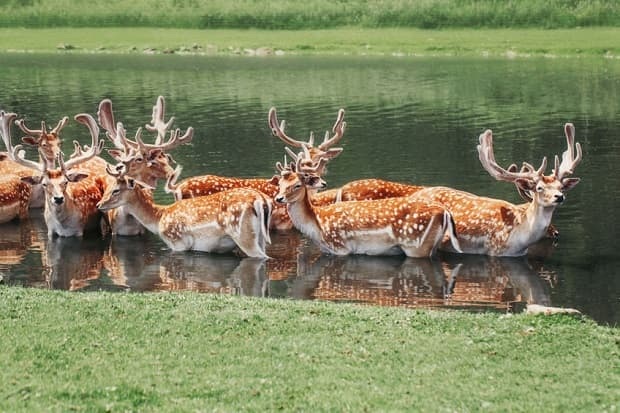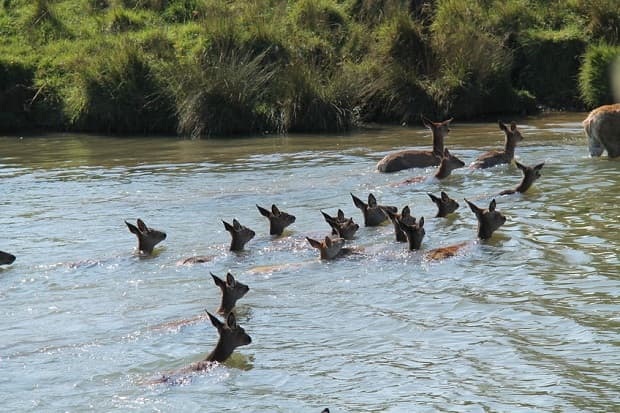Reviewed: 6/3/2025
Can Deer Swim?
Answer at a Glance: Deer can swim. Deer are fast, skilled swimmers who can cross lakes and rivers at up to 13 miles per hour. [1] They often take to the water when frightened, to escape predators, or simply to get to the other side. [2]
Dig Deeper
- The Deer’s Body Is Built for Swimming
- The Deer’s Undercoat Is a Natural Floatation Device
- Why Do Deer Cross Wide Bodies of Water?
- References
The Deer’s Body Is Built For Swimming

Deer have powerful hind legs, which they use to their advantage while swimming. With that power and good stamina, a white-tailed deer can swim distances up to 10 miles, easily allowing them to cross most lakes and rivers. Additionally, their well-designed coat acts as a flotation device. [3]
The Deer’s Undercoat Is a Natural Flotation Device

One reason that deer can swim such long distances is due to the makeup of their coat. Their undercoat is dense and wooly, providing good insulation from the heat-draining effects of spending a long time in the water. But the real secret lies in their top coat, which is made of long, hollow, air-filled hairs. These hairs provide so much buoyancy that up to one-third of the deer’s body is kept above water, reducing the energy needed to propel them against the water’s resistance. It’s a unique adaptation that allows them to navigate water bodies with ease. [4]
Why Do Deer Cross Wide Bodies of Water?

Biologists have noted that deer often take to the water when frightened, sometimes continuing to swim even when the threat has passed. At other times, deer will take to the water to find food or shelter that is not easily accessible by other means. [5] For example, deer on Ohio’s north coast are sometimes spotted in Lake Erie, swimming to the small islands nearby. [6] Some pregnant deer will also swim to small islands, looking for a safer place to give birth to their fawns.
References
- [1] [1] Lincoln Park Zoo – “White-Tailed Deer Desi & Ethel.”
- [2] Gilbert, Randall. A to Z Guide to White-tailed Deer and Deer Hunting. United States, Woods N’ Water, 2003.
- [3] [4] [6] Ohio Department of Natural Resources – “Outdoor Notebook Column – Animal Facts.”
- [5] McShea, William J., and Feldhamer, George A. Deer: The Animal Answer Guide. United States, Johns Hopkins University Press, 2012.
Related Products
Liquid Fence Deer And Rabbit Repellent
REPELS DEER AND RABBITS: Deer and rabbits don’t have to eat vegetation for the repellent to be effective—they have a natural aversion to the scent.

